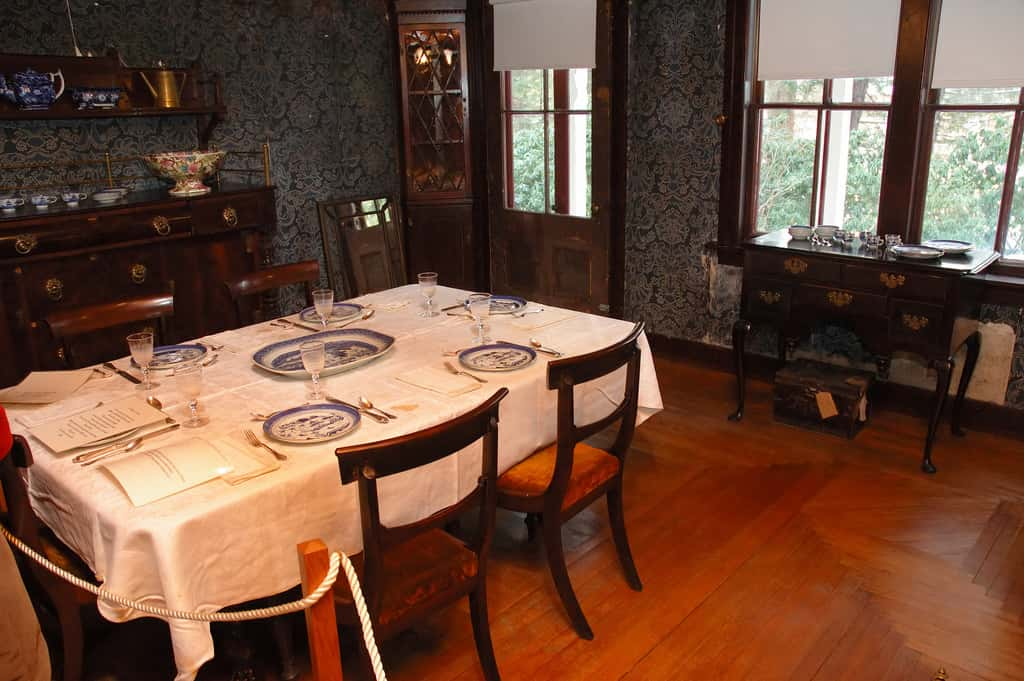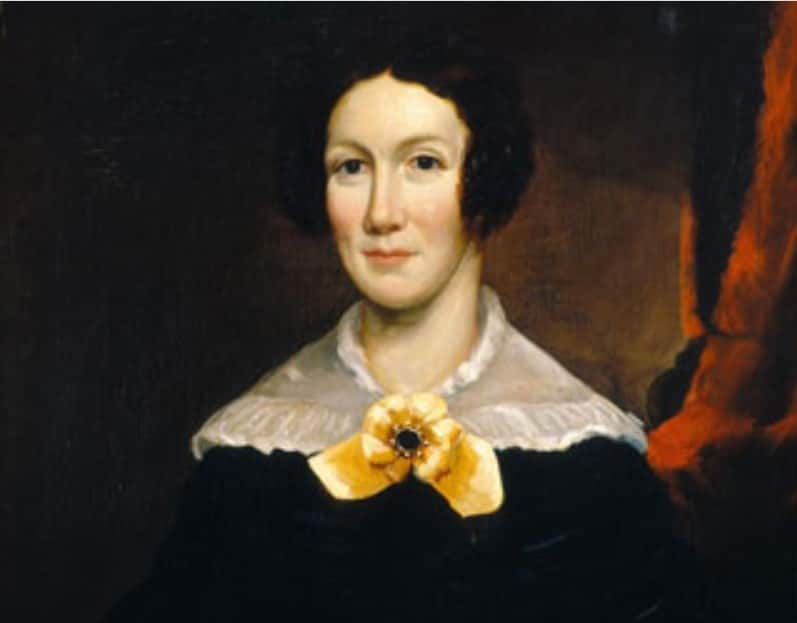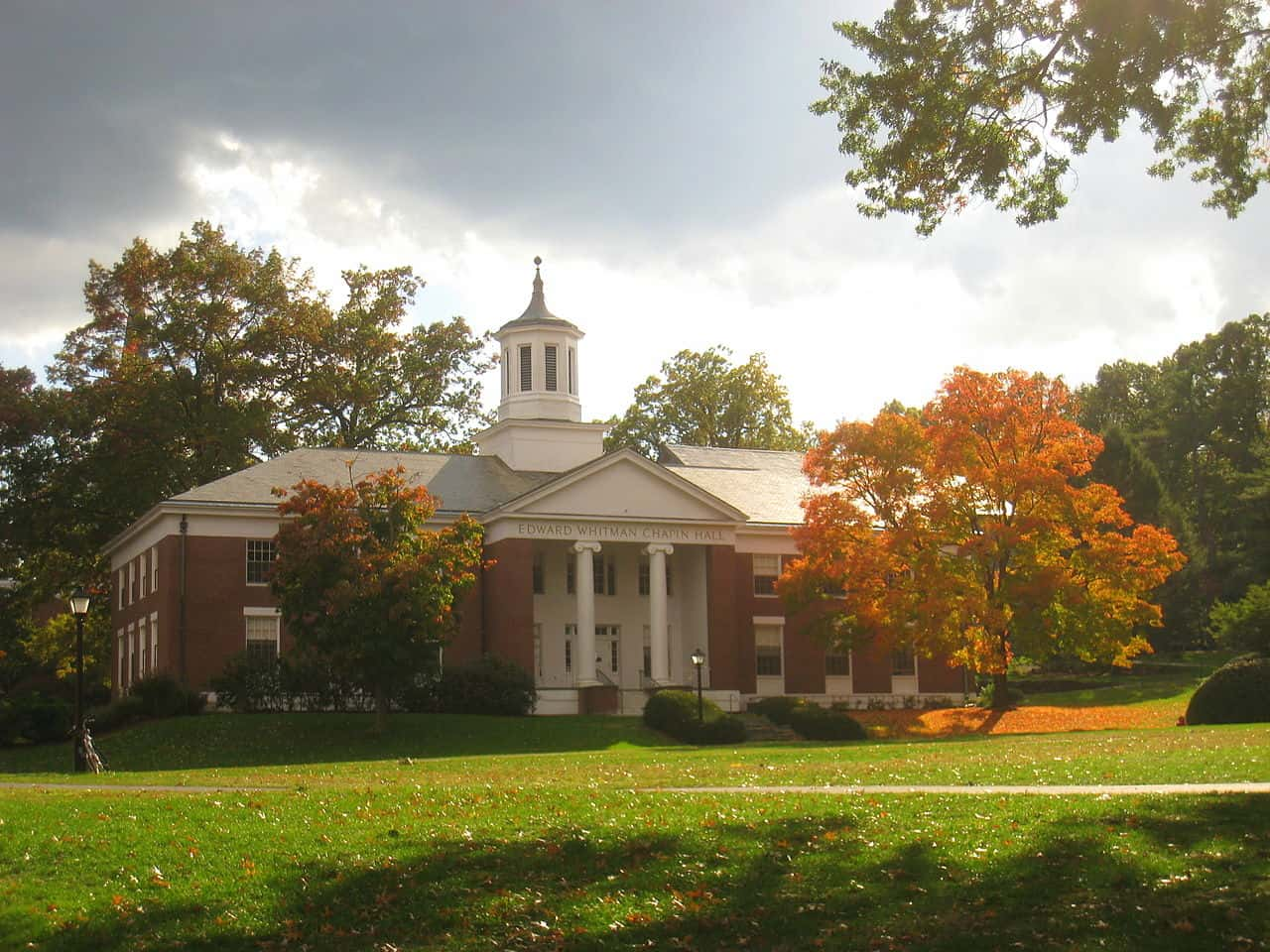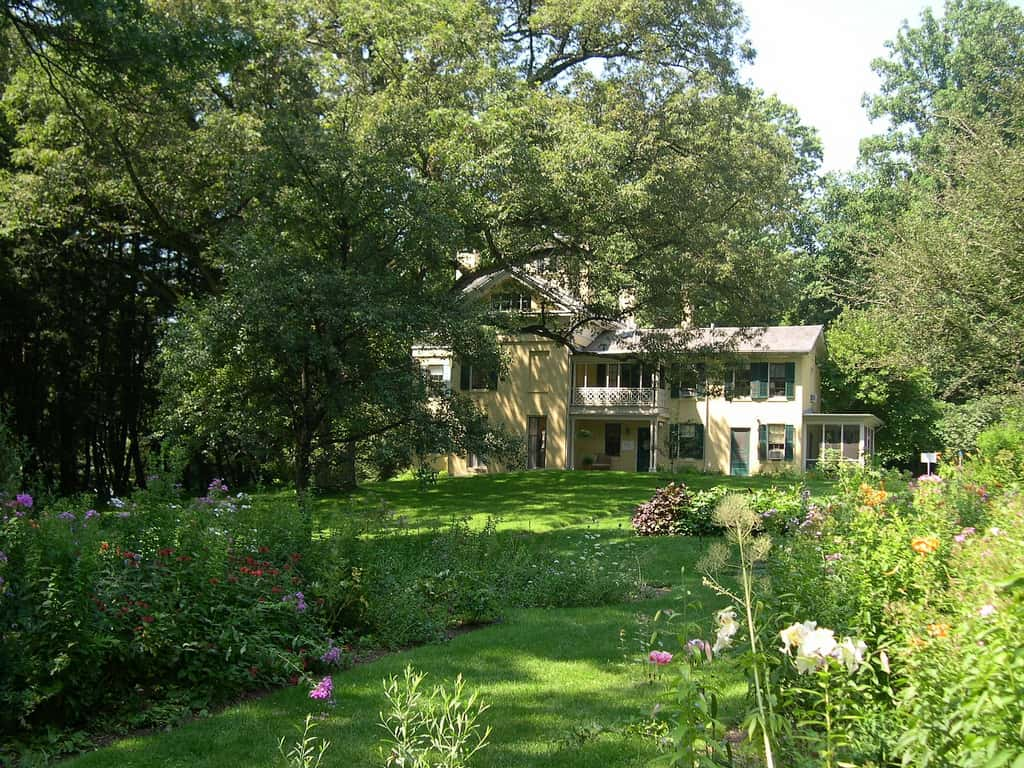Often ranked in the upper echelon of American poets, Emily Dickinson is also one of the more mysterious figures in American literature. Famously reclusive, and incredibly reluctant to publish her own work, Dickinson’s poetry has nevertheless endured for generations. You might be wondering what made her the way she was, or how we managed to get our hands on her poetry in the first place. Continue reading to find out more!
1. No Time to Reach the Hospital!
Dickinson was born on December 10, 1830 in her family’s estate in the Massachusetts town of Amherst.

2. My Mentor
When Dickinson was 18, she met and befriended a young man who worked in her father’s law firm. Benjamin Franklin Newton was a frequent visitor to the Dickinson estate and even though he was eight years her senior, Dickinson was drawn to him for their shared love of literature. It was Newton who saw her talent for writing and recommended other authors that she might like.
3. Friends Until The End
Even after he moved to Worcester and settled down there, Benjamin F. Newton kept up a regular correspondence with Dickinson. Dickinson continued to hold Newton in high esteem, despite their lack of romantic attachment. Upon his untimely demise of tuberculosis in 1853, Dickinson was devastated.
 A Quiet Passion (2016), Hurricane Films
A Quiet Passion (2016), Hurricane Films
4. Class Dismissed
After seven years of schooling at the Amherst Academy, Dickinson enrolled at the Mount Holyoake Female Seminary. However, Dickinson would only attend classes for 10 months before withdrawing from her studies. It was the last time in her life that she went to an educational institution.
5. Why oh Why?!
There have been several suggestions given for why Dickinson dropped out of Mount Holyoake after such a short amount of time. The most popular theories are homesickness, ill health, and her refusal to publicly declare her faith in Christ. Sadly, no sure answer will likely ever be discovered.
 A Quiet Passion (2016), Hurricane Films
A Quiet Passion (2016), Hurricane Films
6. Shipping up to Boston
Dickinson remained within Amherst, Massachusetts for the overwhelming majority of her life. One of the only times she left was on a trip to Boston which took place about 12 years before her passing.
7. Family Ties
Although Dickinson would spend her adult life living in her parents’ home, her relationship with her parents was often unhappy and conflicted. Her father was unsupportive of her writing, while her mother was described by Dickinson as having a frosty disposition. This would improve only around the time of her mother’s sickness and passing, which led to Dickinson forming a closer bond with her before the end.
8. Old Family
While they weren’t especially rich, Dickinson’s family was very prominent in the town of Amherst. They had arrived in North America in the early 17th century, and had prospered ever since. Dickinson’s grandfather had been one of the founders of Amherst College, as well as the man who built the mansion on Main Street in which Dickinson was raised.
9. Famous Father
Speaking of the family’s role in founding Amherst College, Dickinson’s father, Edward, was also involved with Amherst College as a trustee while working as a lawyer. Edward also served in the Massachusetts government for years, first in its House of Representatives for two years and then its Senate for another year.
10. Good Choice!
One of Dickinson’s favorite books was Charlotte Bronte’s Jane Eyre. Frankly, we doubt many will question her taste in literature!
11. That One’s a Dickinson, Make No Mistake!
One of the things that made Dickinson’s poetry especially memorable was her defiance of conventional writing rules. She would experiment with capitalization, punctuation, and grammar. Reportedly, part of her work’s flow came out of her knowledge of religious psalms, though she was more than capable of adding her own creativity into the mix.
12. Worldwide Success
Dickinson’s work has been translated into a wide variety of languages for her international fans. Among said languages are French, Russian, Kurdish, and Farsi.
13. First Daughter, Second Kid
Dickinson was one of three children in her family. She was the middle child between her older brother, William Austin, and her younger sister, Lavinia.
14. Great Acknowledging Great
Perhaps unsurprisingly, Dickinson was a huge fan of William Shakespeare’s writing. In her correspondences, Dickinson once declared “Why clasp any hand but this?” in reference to Shakespeare.
15. Woman’s Best Friend
One of Dickinson’s closest companions in her life was a Newfoundland dog that she called Carlo—named after a dog from the novel Jane Eyre. Carlo would provide companionship to Dickinson for 16 years before his passing. Dickinson never owned another dog again.
 Public Domain Pictures
Public Domain Pictures
16. Do Re Mi Fa So La Ti Do
During her childhood, Dickinson was reportedly passionate for music (or “moosic” as she called it back then). She was routinely praised by her family for her ability to play the piano.
17. You’ve Got a Friend in Me
One of Dickinson’s literary mentors was Thomas Wentworth Higgins. As well as having been a soldier and politician, Higgins was the editor for Atlantic Monthly. His relationship with Dickinson began in 1862 when he published an article that called for budding writers to come forth with their work. In an unusual break from her usual behavior, Dickinson obliged.
Higgins was so impressed by the four poems she sent that they began a correspondence which lasted until Dickinson’s death. By the end of this correspondence, Dickinson addressed her letters to Higgins with “Dear friend” rather than his name.
18. Document of Evidence
The close friendship between Dickinson and Higgins was researched and described in detail in Brenda Wineapple’s acclaimed non-fiction book White Heat, which ended up on many year-end best book lists.
19. Fearing Fame?
We mentioned before that most of Dickinson’s poems were published posthumously, but that doesn’t do justice to how reluctant Dickinson was to get her work out there. Of the handful of poems that were released in her lifetime, they were done either against Dickinson’s will or else they were released anonymously.
20. What Would We Do Without You?
Beginning in the 1850s, Dickinson’s mother became bedridden for the rest of her life. As a result, Dickinson not only became a regular caregiver for her mother, but she also took on the domestic duties around the house. She would write that she didn’t want to leave the house on account of what might happen to either of her parents if they were left alone.
21. Finding a New Friend
In 1855, on one of her rare trips outside of Amherst, Dickinson traveled with her mother and sister to Washington DC and Philadelphia. At the latter location, Dickinson encountered a church minister named Charles Wadsworth. The two would remain friends and correspondences until Wadsworth’s passing in 1882. They would only meet face-to-face twice over the course of their entire friendship. Something tells us that Dickinson would have loved the Internet!
 A Quiet Passion (2016), Hurricane Films
A Quiet Passion (2016), Hurricane Films
22. You Cast That Woman to Play Me?
Dickinson’s life was portrayed on film in 2016 with the release of the film A Quiet Passion. The film starred Cynthia Nixon as the adult Dickinson, Keith Carradine as Dickinson’s father, and Jennifer Ehle as Dickinson’s adult sister Lavinia. Modestly budgeted, the film was very highly acclaimed, but sadly did not make a big splash at the box office.
23. Very Moody
Two of the most recurring themes of Dickinson’s poetry are death and immortality. Many of her poems explore the morbid topic of dying, whether it’s through starvation, crucifixion, shooting, drowning, or suffocation. One aspect of mortalitt that caught Dickinson’s attention in her writing was the “funeral in the brain” which referred to a disinterest in living any longer, which she felt brought about the demise of the self.
24. Don’t Tell Me What to Do!
Although Dickinson spent the first 30 years of her life regularly attending church, she would later renounce her Christian faith in favor of calling herself a “pagan". Her lack of a husband or children can be seen as a further renunciation of a Christian society’s expectations of a woman such as herself.
 A Quiet Passion (2016), Hurricane Films
A Quiet Passion (2016), Hurricane Films
25. Any Motivation?
Dickinson’s withdrawal from society has never been properly explained by scholars or historians, though a few ideas have been brought forward. Dickinson may have suffered from epilepsy, or an extreme case of anxiety. Support for the latter idea comes from her mother, who was known to struggle with depression in 1855.
 A Quiet Passion (2016), Hurricane Films
A Quiet Passion (2016), Hurricane Films
26. Wait Until Next Century!
Despite gaining a following within American literary circles, Dickinson’s poetry wasn’t fully embraced by society until the early 20th century. In the 19th century, Dickinson’s work didn’t conform to what was accepted as the proper form of poetry, which affected its popularity. The emergence of the modernist movement of the 1920s changed the way people looked at poetry, leading to Dickinson’s talent being accepted and recognized for what it was.
27. Where it All Happened
If you’re interested in seeing the home where Dickinson spent so much of her life, feel free to go check it out! It’s now called the Emily Dickinson Museum, having gained that name in 2003 when Amherst College was given ownership of it from the Dickinson family.
28. At Least We’ve Got Company
Dickinson wasn’t the only one of her siblings to stay home throughout her adulthood. Her younger sister Lavinia would also remain unmarried for her entire life, living in the Homestead—as the Dickinson house was known.
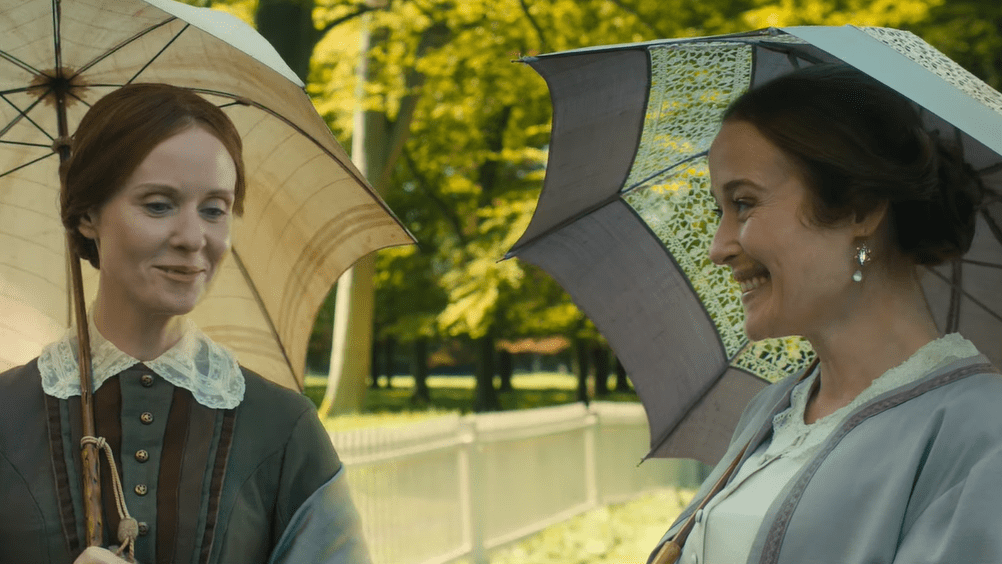 A Quiet Passion (2016), Hurricane Films
A Quiet Passion (2016), Hurricane Films
29. Your Honor…
In the 1870s, an aging Dickinson began a friendship with a judge named Otis Phillips Lord. After Lord’s wife perished in 1877, Lord and Dickinson would write to each other every Sunday. However, while their correspondence became romantic in nature, Dickinson refused Lord’s offer of marriage. Lord and Dickinson would later die within two years of each other.
 A Quiet Passion (2016), Hurricane Films
A Quiet Passion (2016), Hurricane Films
30. Something More Original, Maybe?
Given Dickinson’s reclusive lifestyle, it shouldn’t surprise anyone to know that people in Amherst made up some names for her. The most popular one was the “Myth of Amherst,” in reference to her isolated, mysterious existence. Another moniker bestowed on her was “the Nun of Amherst,” presumably because she was a spinster woman that never wed, and the townspeople were living in an old-fashioned world where a woman was only as good as her marriage and children.
31. A Daughter of Mother Nature
One of Dickinson’s biggest passions in life was for gardening. As a child, she and her sister studied botany as part of their education. Over the course of her life, Dickinson would personally maintain hundreds of different flowers, trees, and plants on her family’s estate. In fact, during her own lifetime, Dickinson was better known in her community as a gardener than a poet.
32. Don’t Look at Me!
Dickinson famously became so reclusive that she would spend most of her time in her bedroom. Even when guests came to the house, she would interact with them through her bedroom door.
33. As Long as it Wasn’t the Butler!
Dickinson died on May 15, 1886. The cause of Dickinson’s passing was listed as Bright’s disease, a kidney-related illness. However, scholars and historians have speculated on whether that was really the cause of her demise. One popular theory is that Dickinson passed on because of high blood pressure.
34. To Edit or Not to Edit. That is the Question
When the bulk of Dickinson’s poetry was finally published, the editors went to work on her eccentric use of punctuation. Dickinson’s writing originally contained many dashes dispersed throughout. These dashes were not all the same length and went back and forth between being horizontal and vertical. These dashes were taken out during the editing process, though many scholars have questioned whether that was a good idea or not, as it potentially ruined the way we were supposed to read Dickinson’s poetry.
35. Only White? That’s Way Too Bland!
One of the most famous stories about Dickinson is that she would insist on only wearing white clothes. However, this wasn’t true, thanks in part to Dickinson’s own testimony. In one of her letters, Dickinson spoke of a brown dress that she owned. There are also pictures of the reclusive poet wearing dark clothing. Frankly, with photographic evidence to the contrary, you’d think an urban myth like that would have lost traction a long time ago!
36. Absentee Mourner
In 1874, Dickinson’s father, Edward, suffered a fatal stroke while he was away in Boston. Such was Dickinson’s reclusive nature by that point that even though the funeral for her father was held in her house, she didn’t leave the bedroom in order to be present. Instead, she left the door open by a sliver so she could overhear the service.
 A Quiet Passion (2016), Hurricane Films
A Quiet Passion (2016), Hurricane Films
37. A Place of Mourning
Even before her passing in 1886, Dickinson had a rather bad time during the early 1880s. First, her beloved friend and sister-in-law, Susan, had her heart broken by Dickinson’s brother William Austin when he began an affair with Mabel Loomis Todd. Susan and Austin’s third child also succumbed to typhoid fever in 1883. And, not only did Dickinson’s mother pass on the year before in 1882, more than one of her close friends died as well that year.
38. Did She or Didn’t She?
One of the most debated relationships in Dickinson’s life was the one she had with her brother’s wife, Susan Huntington Gilbert. The two of them met at Amherst Academy, becoming in-laws in 1856. Of the surviving letters and poems written by Dickinson, more of them were sent to Gilbert than anyone else. Moreover, her language in said poems and letters has been read by many as being very passionate in nature. This has fuelled a long argument among scholars about whether Gilbert and Dickinson had a romantic relationship.
39. Not the Recluse We Thought She was
Speaking of Dickinson’s possibly romantic attachment to Susan Gilbert, a play was written to depict said romance between those two women. Written as a drama-comedy, the play gained enough traction to receive a film adaptation titled Wild Nights with Emily. Starring Molly Shannon and Susan Ziegler, the film won a cash prize at the Champs-Elysees Film Festival and received very high critical acclaim.
40. Secret Lover
Although Dickinson never married, three letters she wrote between 1858 and 1862 are addressed to someone for whom she was clearly enamored. The mystery person, only called “Master” in the letters, has never been identified. Some scholars have suggested various options for who “Master” could have been, with others speculating that he wasn’t anyone in particular, and was either a fictional muse or God. Unless Dickinson’s ghost cares to fill us in, we will never know the truth.
41. Can I Count on You, Sis?
Before her passing, Dickinson made her sister promise to burn her writing so that it would never see the light of day. While Lavinia did burn the majority of her correspondences as she agreed, Dickinson’s poetry was another matter. Dickinson hadn’t said anything about the notebooks which contained said poetry, which was so beautiful that Lavinia became obsessed with getting her sister’s work published.
She turned to Dickinson’s old friend and her sister-in-law, Susan, but when Susan was reluctant to help, Lavinia recruited Mabel Loomis Todd, the very woman with whom Lavinia and Dickinson’s brother was cheating on Susan.
42. Delayed Debut
Unfortunately for Dickinson’s sister, she made a big mistake when she brought her brother’s wife and mistress into the mix. A feud developed quickly, with the complete publication of Dickinson’s poetry held off for legal reasons. It was over 50 years before this mass publication could occur, all thanks to the infighting of the Dickinson family.



